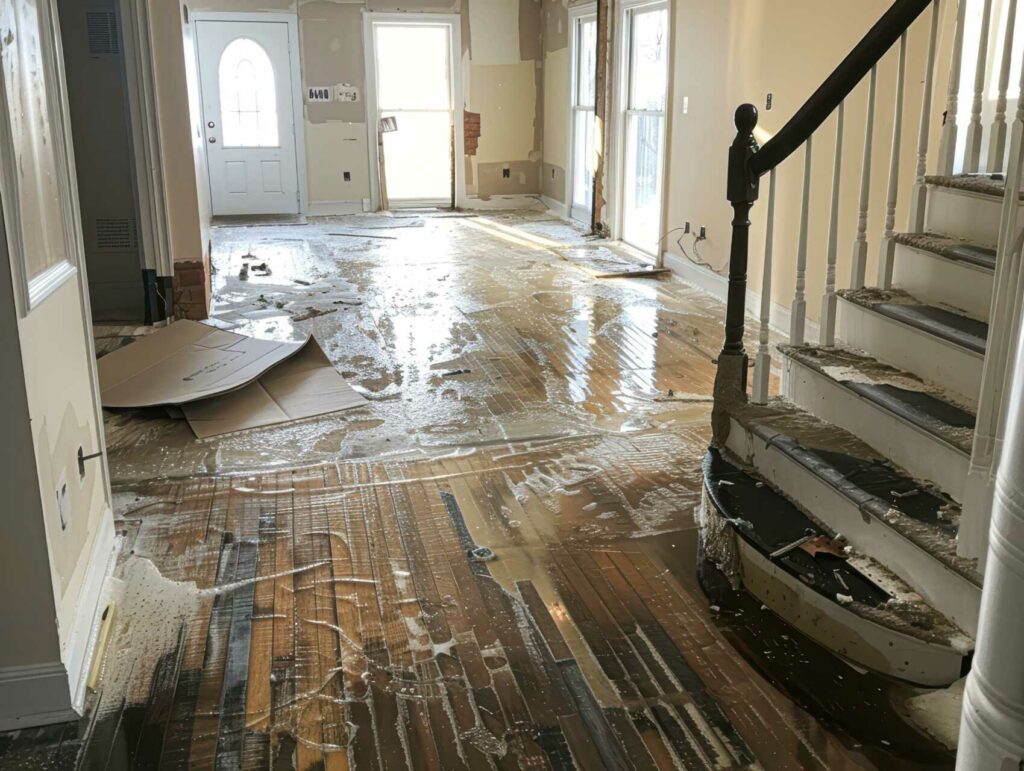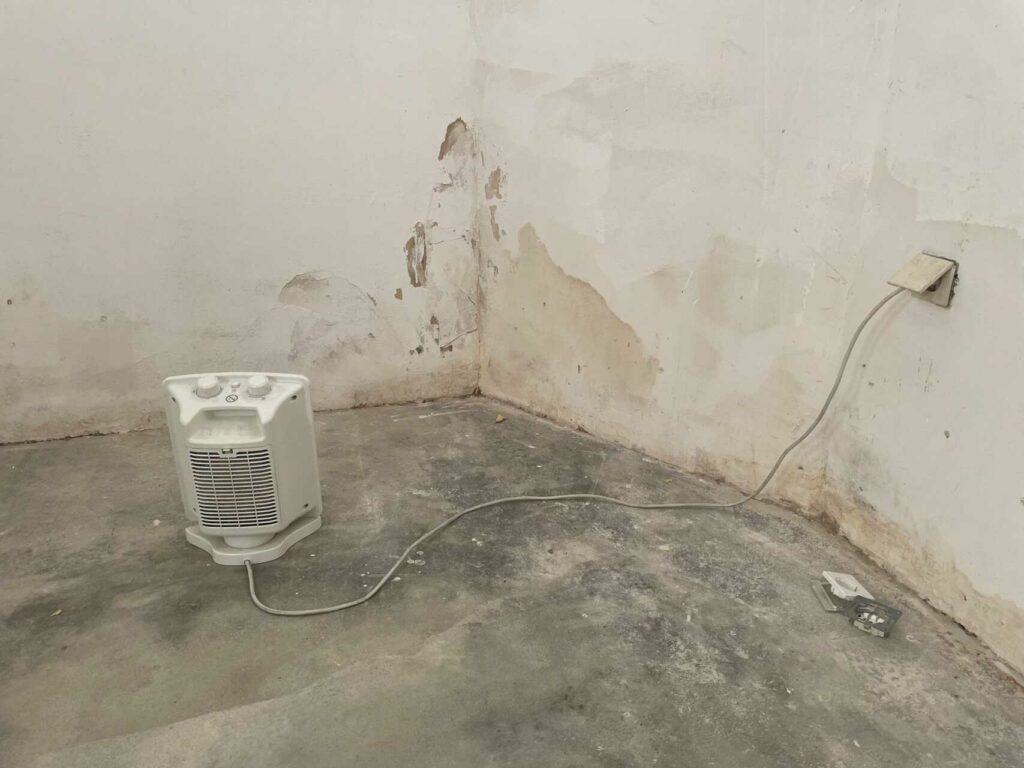Contents
Are you curious about the two different rough ins completed when plumbing a new home? What is a basic plumbing rough-in? Well, you’re in luck! In this article, we’ll dive into the importance of rough ins and discuss the tasks involved in both the water supply rough in and the drainage rough in.
So, if you’re eager to serve others by understanding the inner workings of plumbing, keep reading to discover the essential steps in completing a new home’s rough ins.
Key Takeaways
- Water supply rough in is a critical part of plumbing a new home and involves tasks such as pipe sizing, material selection, installation of shut-off valves, pressure regulation, and pressure testing.
- Drainage rough in ensures proper waste removal and involves tasks such as planning sewer line and drainage pipe locations, selecting suitable pipe materials, ensuring proper fixture placement, and complying with local building codes and regulations.
- The layout of the drainage system is crucial for efficient plumbing, preventing potential issues, and ensuring proper flow and prevention of clogs.
- Pipe installation, venting, sloping, and testing are essential steps in plumbing a new home and involve cutting and fitting pipes, proper alignment and connections, vent placement and sizing, correct sloping of drainage pipes, and conducting pressure and leakage tests for reliability of the drainage system.
Importance of Rough Ins
To understand the importance of rough ins when plumbing a new home, you need to know about the two different types. The rough in stage is a critical part of the plumbing process, as it involves installing the necessary pipes and fittings before the walls are closed up. This ensures that all the plumbing components are in the right place and properly connected, setting the foundation for a well-functioning plumbing system.
The first type of rough in is the water supply rough in. This involves installing the pipes that will carry the water to different fixtures throughout the house, such as sinks, showers, and toilets. It’s essential to ensure that these pipes are properly sized and installed to ensure an adequate and consistent water supply. This is especially important for serving others, as you want to provide them with a reliable source of clean water for their daily needs.
The second type of rough in is the drainage rough in. This involves installing the pipes that will carry waste and wastewater away from the fixtures and out of the house. Proper drainage is crucial for maintaining a healthy and hygienic living environment, as it prevents the buildup of stagnant water and eliminates the risk of water damage. By completing the drainage rough in correctly, you’re ensuring that the plumbing system efficiently removes waste and protects the home and its occupants.
Water Supply Rough In
During the water supply rough in, you’ll install the necessary pipes to carry water to different fixtures in your new home. This is an important step in the plumbing process, as it ensures that water can flow smoothly and efficiently throughout your house.
Here are four key aspects to consider during the water supply rough in:
- Pipe Sizing: It’s crucial to choose the right size pipes for your water supply system. The size of the pipes will depend on factors such as water pressure, flow rate, and the number of fixtures in your home. Proper pipe sizing will ensure adequate water supply to each fixture without any loss of pressure.
- Pipe Material: Selecting the appropriate material for your pipes is essential. Common options include copper, PEX, and PVC. Each material has its benefits and considerations, such as cost, durability, and ease of installation. Understanding the advantages and disadvantages of each material will help you make an informed decision.
- Water Shut-Off Valves: Installing shut-off valves at various points in your water supply system allows you to control the flow of water to specific fixtures or areas of your home. This is useful for maintenance, repairs, or in case of emergencies, as it enables you to isolate the water supply to a specific area without disrupting the entire system.
- Pressure Regulators: Water pressure can vary, depending on factors such as the elevation of your home and the municipal water supply. Installing pressure regulators ensures that the water pressure is consistent throughout your house, preventing damage to fixtures and appliances that may be sensitive to high pressure.
Tasks Involved in Water Supply Rough In
To complete the water supply rough in, you’ll need to perform several tasks to ensure the efficient flow of water throughout your new home. These tasks are essential in providing a reliable water supply to every faucet, shower, and appliance in your house.
Firstly, you’ll need to determine the optimal location for the main water supply line. This line will bring water from the municipal supply into your home. It’s crucial to choose a location that allows for easy access and minimizes the risk of leaks or damage. Once the location is determined, you’ll need to install the main shut-off valve. This valve will allow you to turn off the water supply to your entire house if necessary.
Next, you’ll need to install individual branch lines that will distribute water to different areas of your home. These branch lines will connect to fixtures such as sinks, toilets, showers, and appliances like dishwashers and washing machines. It’s important to measure and cut the pipes accurately to ensure a proper fit. You’ll also need to install shut-off valves for each fixture, allowing you to isolate specific areas or appliances in case of repairs or maintenance.
Additionally, installing pressure regulators and backflow preventers is crucial for maintaining the optimal water pressure and preventing contamination of the water supply. These devices ensure a consistent flow of water and protect against potential health hazards.
Lastly, it’s essential to perform pressure tests to ensure that your water supply system is operating properly. This involves pressurizing the system to the recommended level and checking for any leaks or abnormalities. Any issues discovered during this process should be promptly addressed to prevent further damage or inconvenience.
Drainage Rough In
For the drainage rough in, you’ll need to install the sewer lines and drainage pipes to ensure proper waste removal in your new home. This crucial step in the plumbing process ensures that the wastewater from your sinks, toilets, and showers is effectively carried away from your home and into the municipal sewage system or septic tank.
Here are four important aspects to consider when completing the drainage rough in:
- Slope and Ventilation: It’s essential to ensure that the sewer lines and drainage pipes have the proper slope to facilitate the flow of wastewater. This slope allows gravity to do its job and prevent any blockages or backups. Additionally, adequate ventilation is necessary to prevent the buildup of sewer gases and maintain the optimal functioning of the system.
- Drainage Pipe Materials: Choosing the right materials for your drainage pipes is crucial. PVC pipes are commonly used due to their durability, corrosion resistance, and ease of installation. However, other options, such as cast iron or ABS pipes, may be suitable depending on the specific requirements of your project.
- Fixture Placement: Proper placement of fixtures, such as toilets, sinks, and showers, is vital to ensure efficient waste removal. The drainage rough in involves determining the precise locations where these fixtures will be installed to connect them to the sewer lines and drainage pipes.
- Code Compliance: It’s essential to adhere to local building codes and regulations when completing the drainage rough in. These codes ensure that your plumbing system meets safety standards and functions effectively. Engaging the services of a licensed plumber will help ensure compliance with these regulations.
Tasks Involved in Drainage Rough In
When completing the drainage rough in, you will need to perform several tasks to ensure the proper installation and functionality of the sewer lines and drainage pipes in your new home. These tasks involve careful planning, precise measurements, and skilled execution to ensure that your home’s plumbing system operates efficiently and effectively. Here are the key tasks involved in the drainage rough in process:
| Task | Description | Importance |
|---|---|---|
| 1. Layout | This involves creating a detailed plan of the drainage system, including the positioning of sewer lines, vents, and clean-outs. Accurate layout is crucial to ensure proper flow and prevent clogs. | Ensures efficient flow and prevents potential plumbing issues. |
| 2. Pipe Installation | Installing the drainage pipes involves cutting and fitting the pipes according to the layout plan. Proper alignment and secure connections are essential to prevent leaks and ensure smooth flow. | Ensures a leak-free system and allows wastewater to flow freely. |
| 3. Venting | Venting is necessary to prevent the build-up of gases and maintain the proper functioning of the drainage system. Proper placement and sizing of vents are critical for efficient and odor-free plumbing. | Prevents foul odors and allows for the efficient release of gases. |
| 4. Sloping | Sloping the drainage pipes correctly ensures that gravity can effectively move wastewater away from your home. Improper sloping can lead to clogs and backups, causing significant plumbing issues. | Prevents clogs and backups, ensuring the smooth flow of wastewater. |
| 5. Testing | After installation, it is essential to conduct pressure and leakage tests to identify any potential issues. This step allows for necessary adjustments and ensures the reliability of the drainage system. | Identifies and resolves any issues before finalizing the installation process. |
Conclusion
In conclusion, the two different rough ins completed when plumbing a new home are the water supply rough in and the drainage rough in.
The water supply rough in involves tasks such as installing pipes and fittings to provide water to different areas of the house.
On the other hand, the drainage rough in includes tasks like setting up pipes and vents to ensure proper disposal of wastewater.
Both rough ins are critical for ensuring a functional and efficient plumbing system in a new home.




